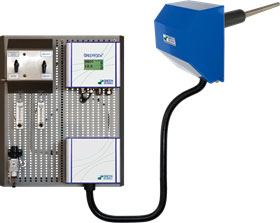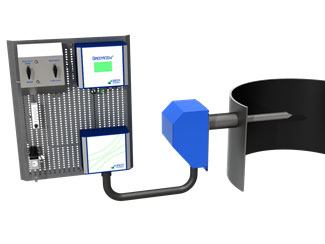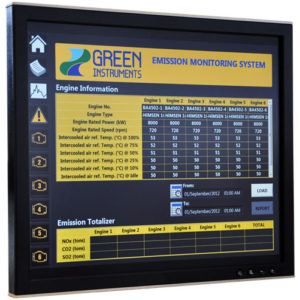G41xx NOx/O2 Analyzing System
We are the UK leader in Gas Detection and we’re here to help. Call us on 01200 445 804 or email info@ribble-enviro.co.uk
New Zirconia Sensor Technology Allows Real-time Measurements
The G41xx NOx analyzer uses a zirconium oxide (ZrO2) sensor with multiple diffusion cells. The sensor is small and robust and can be installed directly on the stack without special protection.
The technology of the GI NOx analyzer allows real-time measurement of NOX and O2 on wet basis at high temperatures. This avoids sampling lines and multiplexing systems, coolers and converters with all their disadvantages.
The simple plug’n’play design makes it easy and cost-effective to install, operate, and maintain. A complete system includes an automatic back-flushing ejector probe that is connected to an analyzing board with analyzer and air supply and calibration gas ports.
NOx Analyzer
The G41 NOx analyzer is type approved by both Lloyd’s Register and DNV-GL. It provides you with real time data on NOx in ppm and O2 in percent. This data can be integrated in any system. Green Instruments offers the G49xx family for this purpose. Click to read more about our G4900 NOx Visualization and Reporting System.
Ejector Probe and Diffusion Probe
You can choose a stack gas oxygen analyzing system which is combined of an analyzing board with either an ejector probe – type G4100 or a diffusion probe – type G4130.
The ejector probe has a built-in ejector that drives the pump drawing the sample gas into the measuring chamber ensuring a fast response time. An ejector probe requires an estimated air consumption of min. 2l/min at 1 bar.
In the diffusion probe, the gas is diffused to the measuring chamber. Although its response time is not as quick as the ejector probe’s, it is sufficient for most industrial applications. Since the diffusion probe does not require any ejecting air, it will mean high cost savings for the owner. Furthermore, the simple design also ensures less and easy maintenance.
How to Comply with Marpol Annex VI
Using the G41xx NOx analyzer in combination with an emissions abatement system like a selective catalytic reduction or exhaust gas re-circulation system will allow constant optimization of the engine and other operating parameters.
Combining a NOx analyzer with an emissions abatement system will provide up to 5% fuel savings and at the same time comply with Tier II emission requirements of Marpol Annex VI. Even with Tier II engines, continuous monitoring of NOx will allow using or bypassing the after-treatment equipment to achieve Tier III while sailing in and out of the emission control areas (ECA).
Real time emission data from the NOx analyzer provides important input for diagnostics of both the engine and the after-treatment equipment.
We are the UK leader in Gas Detection and we’re here to help. Call us on 01200 445 804 or email info@ribble-enviro.co.uk
Green Instruments’ NOx analyzer – the G41xx NOx/O2 Analyzing System – is a direct in situ gas analyzer that monitors NOx and O2 concentrations in emission gas.
The NOx analyzer provides a cost-effective solution to help fulfill tightening emission regulations as well as supporting the most effective operation for all types of combustion processes. It is designed to meet the challenging requirements for monitoring the inlet and outlets of selective catalytic reduction systems (SCR) on all types of combustion sources.
Key Features
- LR type approved
- Strengthen your environmental responsibility
- Support your green image
- Comply with tightening emission regulations
- Check engine/SCR system performance
- Provide data for trim control of ammonia injection process
- Provide data for combustion optimization
- Simple, user-friendly, and cost-efficient technology
- Worldwide customer support
Brand
Green Instruments
Our Customer's Thoughts
NEWS
Dangers of Flammable Gases
Volatile Organic Compounds ( VOC’s )
Dangers of Hydrogen Sulphide Gas
Got a Question?
Our specialist gas safety team are on hand to answer any of
your queries.
Contact us today for advice or assistance.




Reviews
There are no reviews yet.